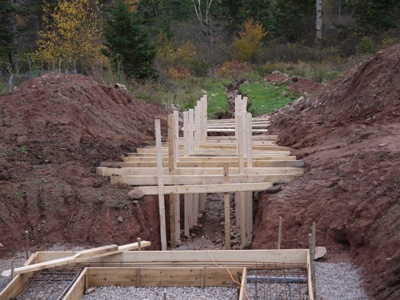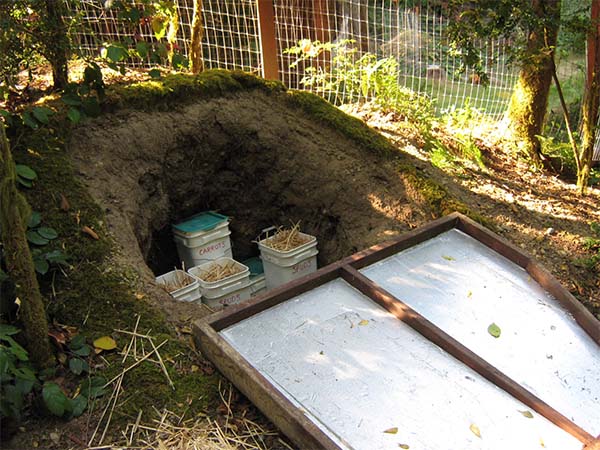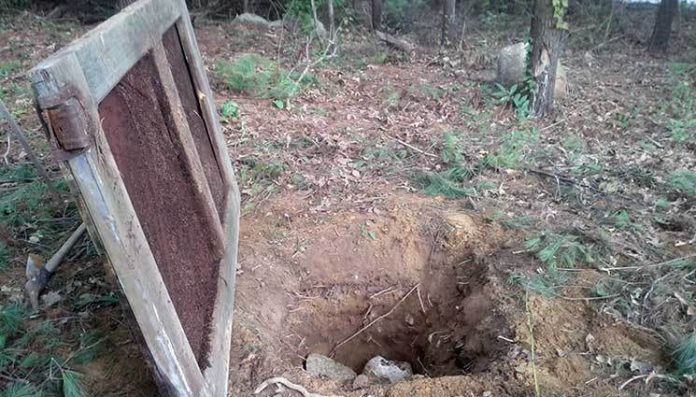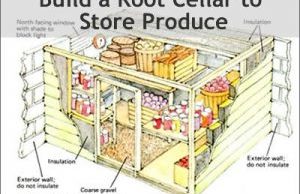The American pioneers had to be very clever about food. The United States government was offering up 160 acres to the brave souls that migrated out west. That is a massive expanse of free land that took a lot of work to manage.
The important thing to remember is that there were no supermarkets or anything else out west in 1862, when the Homesteading Act written into law. That meant the pioneers had to get the most out of every scrap of food they raised.
One of the tools they used to achieve this goal was the root cellar. The root cellar is an underground storage area used for storing things like garlic, potatoes, dried grains and even fresh vegetables. The temperature is regulated by the dirt that surrounds the small space. This means you have a storage space that doesn’t freeze in the winter or rot food in the hot summer.
Should you consider your own small root cellar?
Store Fresh Produce for Months
By layering sand and fresh produce in wooden barrels the pioneers were able to keep that produce for months after it was picked. This worked best with root vegetables like carrots, turnips, rutabaga, beets and sweet potatoes.
The temperature in the root cellar and the insulation from the sand meant that these vegetables could be kept moist and cool for most, if not all, the time.
The modern root cellar could be used in just the same way. However, we could even store backup long term food storage in a modern root cellar. This is important because it takes up less space in our home and offers us that security of having food on hand.
Having extra food on hand is not about paranoia. We are experience devastating floods in the Midwest lately. Nations around the world are at war and places like Venezuela are experiencing the realities of an imploded economy.
But storing food does not have to be about serious disaster either. What happens if you lose your job or get sick? These things happen every day in our nation. You have life insurance, but many don’t have things like water and food insurance. That is where long term food storage comes in to play.
Related: Food Storage: Knowing What You Have is More Important than Buying Something New
DIY Root Cellar
Building your own root cellar is well within your scope. We are going to look at two ways to get this done on your own property.
No matter which method you choose you are going to do some serious digging. It’s probably worth considering your method for that up front. This could be something you suffer through by hand or you might be interested in renting machines to make it easier.
In most cases you are going to want to go 15’ down! But it depends on your area so do the research on your local area.
Wood Framed Root Cellar

The wood framed root cellar is the classic version and its basically like building a shed underground. Your build will have a wood roof and wood frame. But the wall will be dirt and the room can either be tiled or you can reinforce it and bury it entirely.
You can keep a dirt floor in your root cellar. There is really no reason to pour concrete or do anything but just keep the natural ground.
Earthbag Root Cellar

Earthbags are an extremely cost-effective method for building. Some people live in earthbag homes! The earth bag is basically a sandbag and these bags are stacked on barbed wire, in rows, to create layers. Each layer is built upon another with barbed wire in between and these layers can be stacked into all sorts of shapes for several structures.
The bags are coated and smoothed with a stucco finish and there you have it! Earthbags are very cool!
To build a basic rectangular earthbag root cellar would be very simple and would cost less than using wood and nails.
Related: Ingredients Matter: Store Foods Your Family Will Actually Want to Eat
Covert Root Cellar?

As we mentioned earlier, you can bury a root cellar completely. In terms of security and privacy a covert root cellar might be just what you are looking for. Fortified, it could also double as a storm shelter.
I must imagine that if you are considering a root cellar you must also be thinking about living a more prepared and self-sufficient lifestyle. If you want to explore these topics even further The Lost Book Of Remedies is the reference on preparedness.
The Lost Book Of Remedies covers all the basics of preparedness including growing and storing your own food. It lays the base and you will get a comprehensive look at self-reliance and independence.
Don’t be fooled, The Lost Book Of Remedies is a guide to a better life, it’s not a guide to surviving the end of the world. Growing food, learning first aid and home security are tools to use each day.
No matter your motivation behind this root cellar it’s a step in the right direction. And before you start digging, you should check out this offer coming straight from our Easy Cellar partners. Read about the benefits of building one the Easy Cellar way, and then decide for yourself. That’s all I’m saying.
Conclusion
Right now, we live in an age of excess. We have food everywhere and we waste about 50% of it!
What is the quality of that food? We all shudder at the thought of pesticides and other contaminants in our foods. It seems like we see a new rash of recalls each day!
Now is the time to seek out food independence and you can do this with your own actions, like building a root cellar, as well as, getting a little help from a resource like The Lost Book Of Remedies. The beautiful thing about self-reliance and independence is, its all up to you.












